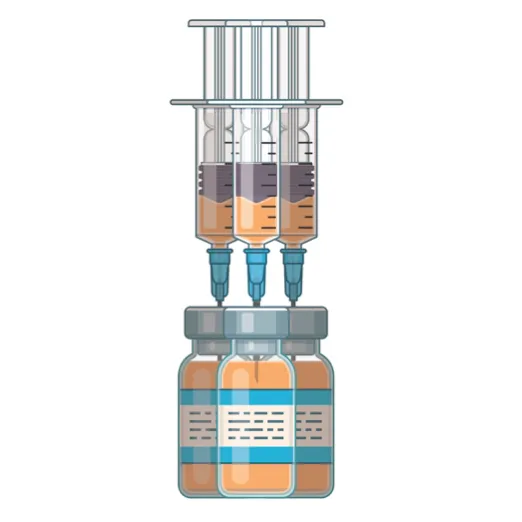The active ingredient of vaccines can vary dramatically – they might take the form of live (but weakened) viruses, completely inactivated viruses or just fragments of a virus or bacteria. There are numerous ways the vaccine might be administered, for example, orally, nasally or by a jab. These factors require different components to make the vaccine easy to produce, effective and stable. Let’s take a single dose of a measles, mumps and rubella jab as an example.

Water: 464.4mg (93.47 per cent)
Live virus particles: About 0.003mg (0.0006 per cent). The smallest component of the vaccine are the weakened measles, mumps and rubella viruses.
Hydrolysed gelatin: 15mg (3 per cent). A stabiliser that protects the viruses from the effects of changing temperatures during preparation and storage.
Sodium phosphate: 0.3mg (0.06 per cent). This keeps the whole thing at a pH that the viruses need to stay alive.
Recombinant human albumin: about 0.3mg (0.06 per cent). Another stabiliser made by bacteria engineered to produce a human protein.
Sucrose: 2mg (0.4 per cent). Yet another stabiliser!
Sorbitol: 15mg (3 per cent). This is more commonly used as an artificial sweetener. Here, it acts as another stabiliser.
Subscribe to BBC Focus magazine for fascinating new Q&As every month and follow @sciencefocusQA on Twitter for your daily dose of fun science facts.